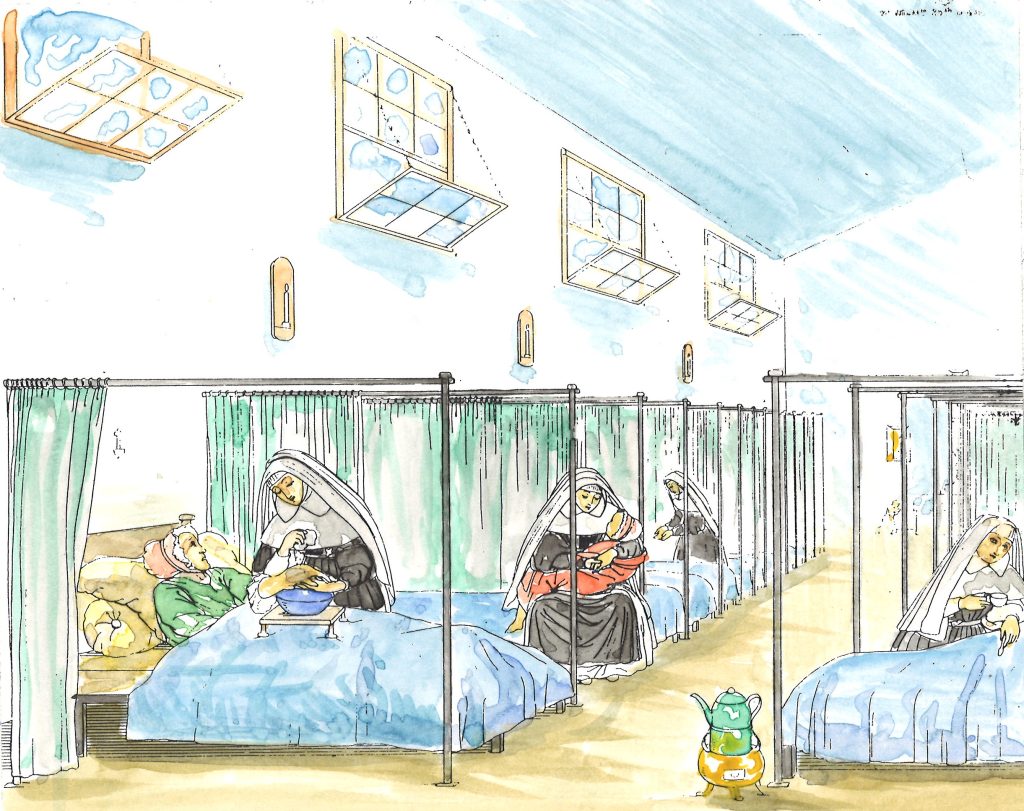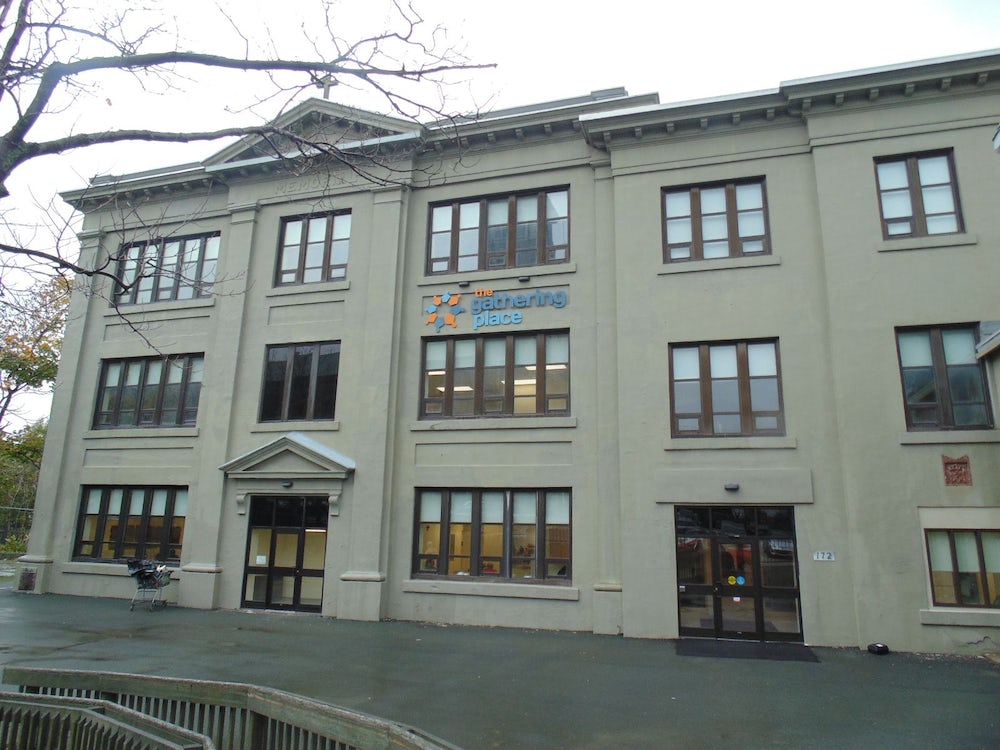Margaret O’Farrell was born in County Tipperary in November of 1841, the only daughter of Mary and Patrick O’Farrell. She arrived in St. John’s on March 17,1865 to enter the Sisters of Mercy.
 At her reception into the Novitiate on August 2 of that same year she received the name Sister Mary Patrick Ligouri. A local newspaper, The Newfoundlander, in its August 3,1865 issue, reported on her Reception Ceremony, noting that a couple of her brothers “our respected townsmen, the Messrs. Farrell” had emigrated to Newfoundland from Ireland and were well established in the business community of St. John’s by the time their sister arrived.
At her reception into the Novitiate on August 2 of that same year she received the name Sister Mary Patrick Ligouri. A local newspaper, The Newfoundlander, in its August 3,1865 issue, reported on her Reception Ceremony, noting that a couple of her brothers “our respected townsmen, the Messrs. Farrell” had emigrated to Newfoundland from Ireland and were well established in the business community of St. John’s by the time their sister arrived.
After her profession, Sister M. Patrick spent most of her religious life teaching at St. Bridget’s School in the east end of St. John’s and at St. Peter’s School on Queen Street. Both of these schools were under the care of the Sisters at Mercy Convent and the sisters would have made the daily walk to and from school in all kinds of weathers.
In August of 1884 Sister M. Patrick’s niece, Mary O’Farrell (later known as Sister Genevieve) arrived in St. John’s to enter the Sisters of Mercy. Sister M. Patrick had left Ireland before Mary had been born. Sadly, the two had little opportunity to spend much time with one another, as Sister M. Patrick died on May 10, 1885. Her obituary notice in The Evening Telegram of May 18 1885 speaks of her as follows:
She ministered consolation to many a poor sick death-stricken family,
as well as imparted the gift of a religious education
to the destitute and the poor.
Margaret O’Farrell nació en el condado de Tipperary en noviembre de 1841, hija única de Mary y Patrick O’Farrell. Llegó a St. John’s el 17 de marzo de 1865 para ingresar en las Hermanas de la Misericordia.
En su recepción en el noviciado, el 2 de agosto de ese mismo año, recibió el nombre de Hermana Mary Patrick Ligouri. Un periódico local, The Newfoundlander, en su edición del 3 de agosto de 1865, informó sobre su ceremonia de recepción, señalando que un par de sus hermanos “nuestros respetados vecinos, los señores Farrell” habían emigrado a Terranova desde Irlanda y estaban bien establecidos en la comunidad empresarial de St.
Después de su profesión, la hermana M. Patrick pasó la mayor parte de su vida religiosa enseñando en la escuela de Santa Brígida, en el extremo este de San Juan, y en la escuela de San Pedro, en Queen Street. Ambas escuelas estaban bajo el cuidado de las Hermanas del Convento de la Misericordia y las hermanas habrían hecho la caminata diaria hacia y desde la escuela en todo tipo de climas.
En agosto de 1884, la sobrina de la Hermana M. Patrick, Mary O’Farrell (más tarde conocida como la Hermana Genevieve) llegó a St. La Hermana M. Patrick había dejado Irlanda antes de que naciera Mary. Lamentablemente, las dos tuvieron pocas oportunidades de pasar mucho tiempo juntas, ya que la Hermana M. Patrick murió el 10 de mayo de 1885. Su nota necrológica en The Evening Telegram del 18 de mayo de 1885 habla de ella de la siguiente manera:
Consoló a muchas familias pobres, enfermas y afligidas por la muerte,
así como impartió el don de una educación religiosa
a los indigentes y a los pobres.


 The theme for this year is To Hope and Act with All Creation, and the symbol is based on Romans 8.
The theme for this year is To Hope and Act with All Creation, and the symbol is based on Romans 8. These two great women of Mercy faithfully carried out the works of Mercy as if there were dozens of sisters in the Newfoundland Mercy community – continuing in school and visiting the sick and poverty-stricken in their homes and in St. John’s Hospital (located near present-day Victoria Park). In June of 1947 when St. John’s was in the throes of a severe typhus epidemic, they closed school and devoted themselves entirely to visiting and caring for the sick. It was at St. John’s Hospital that Sister M. Joseph caught the dreaded fever from a young seaman who was suffering great physical and spiritual anguish. Despite the medical services of physicians and the loving care of Sister M. Francis, Sister M. Joseph died after two weeks of suffering the torments of the disease. She was 48 years of age and had only been a Sister of Mercy for four years.
These two great women of Mercy faithfully carried out the works of Mercy as if there were dozens of sisters in the Newfoundland Mercy community – continuing in school and visiting the sick and poverty-stricken in their homes and in St. John’s Hospital (located near present-day Victoria Park). In June of 1947 when St. John’s was in the throes of a severe typhus epidemic, they closed school and devoted themselves entirely to visiting and caring for the sick. It was at St. John’s Hospital that Sister M. Joseph caught the dreaded fever from a young seaman who was suffering great physical and spiritual anguish. Despite the medical services of physicians and the loving care of Sister M. Francis, Sister M. Joseph died after two weeks of suffering the torments of the disease. She was 48 years of age and had only been a Sister of Mercy for four years. online in the Associates section of our website. The newsletter contains news and views, requests for prayers and material for reflection.
online in the Associates section of our website. The newsletter contains news and views, requests for prayers and material for reflection.
 At her reception into the Novitiate on August 2 of that same year she received the name Sister Mary Patrick Ligouri. A local newspaper, The Newfoundlander, in its August 3,1865 issue, reported on her Reception Ceremony, noting that a couple of her brothers “our respected townsmen, the Messrs. Farrell” had emigrated to Newfoundland from Ireland and were well established in the business community of St. John’s by the time their sister arrived.
At her reception into the Novitiate on August 2 of that same year she received the name Sister Mary Patrick Ligouri. A local newspaper, The Newfoundlander, in its August 3,1865 issue, reported on her Reception Ceremony, noting that a couple of her brothers “our respected townsmen, the Messrs. Farrell” had emigrated to Newfoundland from Ireland and were well established in the business community of St. John’s by the time their sister arrived.